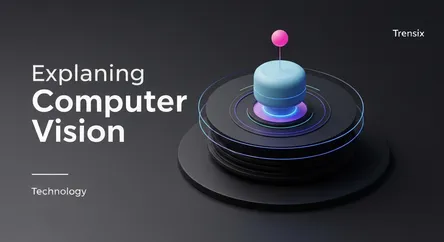Technology
Explaining Computer Vision

Discover computer vision, the AI field that enables computers to see, interpret, and understand visual information from the world.
What is it?
Computer Vision is a field of artificial intelligence (AI) that trains computers to interpret and understand the visual world. Using digital images from cameras, videos, and deep learning models, machines can accurately identify and classify objects — and then react to what they “see.” It aims to replicate the powerful capabilities of human vision. By processing visual data, algorithms can detect objects, recognize faces, and even understand the content and context of a scene, much like a person would.
Why is it trending?
The rise of computer vision is fueled by the explosion of visual data from smartphones and sensors, combined with significant advancements in computing power (especially GPUs) and deep learning algorithms. Techniques like convolutional neural networks (CNNs) have dramatically improved accuracy, making it possible to solve complex visual tasks at scale. This has unlocked countless commercial applications, driving investment and research in the field.
How does it affect people?
Computer Vision is already integrated into daily life. It powers facial recognition to unlock your phone, social media's automatic photo tagging, and augmented reality filters. In wider society, it's the core technology enabling self-driving cars to navigate roads, medical systems to analyze scans for diseases like cancer, and retail stores to create cashier-less checkout experiences. It enhances security, improves healthcare diagnostics, and automates tasks across numerous industries, making processes faster and more efficient.